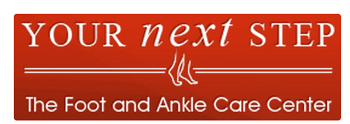Since most sports involve some kind of action on your feet, it’s essential to have the right footwear for each type of activity. Not only should the needs of each sport be carefully considered but also the unique characteristics of your child’s feet.
Participating in sports, whether competitively or for fun, can become a painful experience with poorly shaped, inflexible shoes. Athletic shoes that don’t fit properly can restrict foot development and the child’s natural movements as well as cause pain and negatively affect performance. Improperly fitting athletic shoes can cause short-term problems like blisters or – even worse – long-term foot deformities like bunions.
Buy the Right Shoes the First Time
- Stick to stores that specialize in athletic footwear. They will have the best variety of brands, styles and sizes.
- Take your child shopping at the end of the day when feet are largest.
- Have both feet professionally measured every time you shop.
- Always choose shoes with your child’s specific sport in mind. Tennis shoes are appropriate for side-to-side movement and running shoes have extra cushioning for forward movement.
- Invest in high quality, durable materials – leather, suede and canvas are good choices. Avoid synthetic materials that don’t “give” and can result in ingrown toenails or hammertoes.
- Have your child bring along his athletic socks for trying shoes.
- Check that there is 1/2 inch or more between the tip of the shoe and the longest toe, and that the toes have wiggle room.
- Watch your child as they walk around the store in new shoes. The heels shouldn’t slip which can cause blisters. Shoes should feel comfortable right away without any breaking-in period.
Check and recheck that your child’s shoes still fit as they can outgrow them quickly, especially during growth spurts.
Cleats can be problematic if there are few cleats on the heel, putting too much pressure on heel spots and causing heel pain. Select shoes that have multiple heel cleats. Those shoes with shorter cleats (up to 1/2 inch) may be a good choice for younger children to prevent knee and ankle injuries.
We Can Help with Your Child’s Foot or Ankle Pain
Don’t let your child continue playing sports with foot pain. This can only cause problems later on. Please contact Dr. Eric Ricefield, Dr. Mark Yagodich and Dr. Aliza V. Eisen, board certified or qualified podiatrists at Your Next Step with any concerns about your child’s feet or ankles. We can check your child’s athletic footwear to make sure they are outfitted for success. You’ll find contact information at the website for our Ardmore, Paoli and Downingtown offices. Let your child be the athlete they dream of being by outfitting them with the right footwear from the start!
